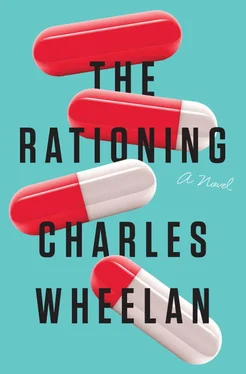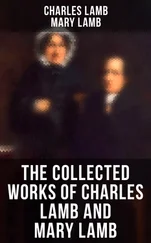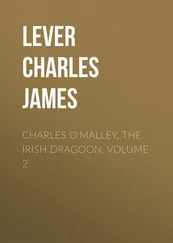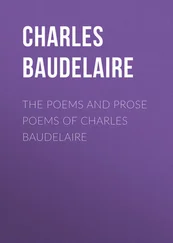LIKE ALL SUCCESSFUL WRITERS, TONY PEREZ STUCK TO A DISCIPLINED schedule. He awoke early, both because his writing was sharpest in the morning and because his stories did best when they appeared early. Many of us had developed the habit of perusing the headlines on our devices when we woke up in the morning, or after settling in at the office with a hot cup of coffee. Perez was not just a gifted writer of fake news; he was also a sophisticated consumer of data. He spent his afternoons studying the metrics for his masterpieces: who read them, who shared them, what stories did best with different kinds of readers, and so on. Real news outlets do not have the luxury of changing the news to suit the tastes of their readers. New York Times readers would no doubt prefer sunny weather and a balanced federal budget, but if those things are not really happening, the editors have no choice but to report the less pleasant stuff. Tony Perez, on the other hand, woke up every morning to a blank canvas. What would most fascinate or captivate a housewife in Atlanta or a bored software executive riding a bus to work in Silicon Valley? Perez drew laughter during his testimony before Congress when he described himself as “an artist,” but he was not necessarily wrong. He was clearly a creative writer. [13] Perez’s conviction is still winding its way through the courts. He was originally convicted of reckless endangerment, but that conviction was overturned on appeal on First Amendment grounds. Perez continues to maintain that “alternative news” is a form of freedom of expression. Nearly every legal scholar I have spoken with on this topic believes that the Perez case will ultimately end up before the Supreme Court.
Not that I have anything but contempt for him and his ilk: if I had seen him walking on the road the morning he wrote his first Capellaviridae story, I would have run him over with my car (if I owned a car). But even I have to concede that he was very good at what he did. Advertisers loved him; at the time the Capellaviridae story broke, Perez was earning over $700,000 a year from online advertising—not bad for an unemployed PE teacher who had been living in his parents’ attic just two years earlier.
Perez had seen that first Capellaviridae story posted by The New Yorker , as well as the early follow-ups generated by the consortium of news outlets reporting on the story. Those pieces were scary and incomplete. For Perez, this was a gift, as it allowed him to fill in the details. He knew from experience that his best stories, like successful Hollywood movies, needed a villain. He also knew that his readers hated politics, but they lapped up political conspiracies. As Perez sat at his kitchen table in sweatpants and a T-shirt, he immediately recognized Capellaviridae as an opportunity to weave together a scary pathogen with political intrigue. “I write fiction that feels like news,” Perez told the Outbreak Inquiry Commission. “It has to be nested in reality.” Perez was lambasted for portraying himself as some kind of cross between Edward R. Murrow and Picasso, but his testimony was fascinating. His genius, if I dare use that word, lay in taking events people knew to be true, introducing layers of fabricated but intriguing detail, and producing a compulsively readable story that felt accurate to his most loyal readers. As he would later testify, “Nobody really knew what was going on. I offered one possibility.”
His “possibility” was this: An Arizona-based Latino separatist group had genetically engineered the virulent strain of Capellaviridae . He could explain to his readers what we scientists were unable to explain—why an innocuous virus suddenly became deadly. This separatist group, the so-called Latino Liberation League (LLL), [14] Perez told Congress that he came up with this name, the LLL, while waiting for his burrito to heat up in the microwave.
had also engineered an effective antidote for the virus. According to Perez’s initial story, the LLL was offering the antidote to the President and Congress in exchange for the creation of an independent, Spanish-speaking nation to be carved out of parts of New Mexico, Arizona, and West Texas. Perez’s story had two graphics: a map showing the proposed borders of the new independent nation, Estado Latino Nuevo, as well as a larger map of the United States with eleven red dots indicating where the virus had been deliberately introduced.
For all the fiction embedded in the story, there was one pillar of truth sufficiently strong to keep the story alive: There had been talk in previous years, mostly among fringe groups on the far right and far left, about a Latino independence movement. One Arizona community, some little town with 350 residents, had voted to make Spanish its official language. Never mind that no one had ever articulated what an “official language” really means at the town level; this quirky development was enough to inflame the imaginations of both right-wingers (who feared the country was being hijacked by Mexicans) and left-wingers (who were advocating for more explicit political rights for the nation’s Hispanic population). When Perez tossed Capellaviridae into this political maelstrom—a fake news grenade—he hit the readership jackpot. For the President, who was preparing to address the nation from a military base in Honolulu, it meant that a shockingly high proportion of Americans believed the country was under bio-attack from a domestic terrorist group.
The President was scheduled to address the nation at noon Eastern Time, six a.m. in Hawaii. He and his principal advisers were not the only political leaders for whom the crisis was top of mind. In China, Premier Xing had been huddled with his senior staff since the Capellaviridae story broke. It is not hard to infer what they were discussing: What ought to be the price for the Dormigen that America was now desperate for? And when exactly should that offer be made?
PART 5

THE CHINA OPTION
HAD THE SECRETARY OF STATE BEEN DELIBERATELY excluded from our Dormigen discussions, as she would later allege? I saw absolutely no evidence of that. True, the only credible alternative explanation—that no one thought to include her—suggests an almost unfathomable incompetence. In her congressional testimony, the Chief of Staff took responsibility for this oversight, explaining that the Secretary of State would have been briefed before any meetings began in Australia. The National Security Adviser was more direct: “I just assumed she knew,” she testified.
I can attest that there was never a grand strategic plan with regard to who was in the room. One thing just led to the next. The Capellaviridae challenge was compounded by the fact that the principals making decisions always felt that a solution would present itself—that the planes headed for their targets would turn around, figuratively speaking. They believed— we believed, if I am being honest—that something would save us: an antidote, more Dormigen from our allies, or something else at the eleventh hour. Or with one call to Beijing we could make the Capellaviridae problem go away. With the China option on the table, the Secretary of State should have been involved from the beginning. In fact, she boarded Air Force One for the flight to Australia with no knowledge of the crisis the White House was trying to manage. She learned about the Outbreak only when the story went public and Air Force One started doing 180-degree turns over the Pacific.
Imagine the Secretary of State’s surprise and dismay when she was awakened abruptly, ushered into the conference room, and told for the first time that the South China Sea Agreement might be scrapped because China was the only country with enough Dormigen to save the Americans afflicted by a deadly virus. She would later write in her autobiography, “At first I thought I was dreaming. This had to be some kind of nightmare. I had spent the previous week in Tanzania and Kenya. I was still taking anti-malaria medicine. One of the benign side effects of that drug (Malarone) was particularly vivid dreams. What other explanation could there be? Would the President of the United States really withhold this information from his Secretary of State, even as we were flying to sign the most significant international agreement of his presidency?”
Читать дальше













